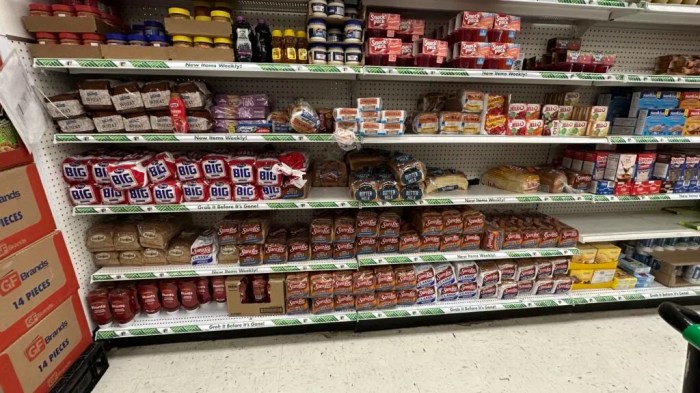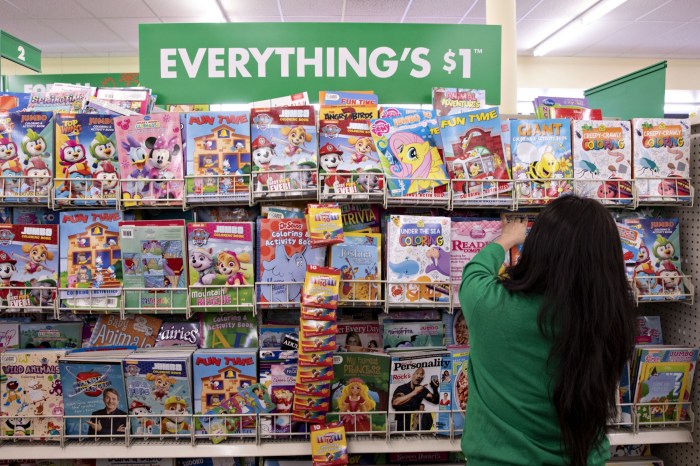Product Variety at Dollar Tree

Food coloring at dollar tree – Dollar Tree offers a surprisingly diverse range of food coloring options, considering its low price point. While not as extensive as a specialty baking store, the selection caters to basic needs for home bakers and crafters. The availability of specific colors and types can vary depending on location and stock, so it’s always a good idea to check your local store.
Food Coloring Types and Options at Dollar Tree
Dollar Tree typically stocks liquid and gel food colorings, with liquid being the more common variety. Powdered food coloring is less frequently found. The differences between these types affect their intensity, application, and overall performance in different recipes.
Comparison of Food Coloring Types, Food coloring at dollar tree
| Product Type | Color Options | Packaging Size | Notable Features |
|---|---|---|---|
| Liquid Food Coloring | Red, yellow, blue, green, sometimes others like purple or orange (often a limited selection of primary colors and a few secondary ones). | Small bottles, usually around 1 ounce. | Easy to use, readily mixes into liquids, but can sometimes be less vibrant than gel. |
| Gel Food Coloring | Similar range to liquid, but might include more concentrated options or specialized shades if available. | Smaller tubes or containers than liquid, often less than 1 ounce. | More concentrated than liquid, resulting in more vibrant colors, and less likely to alter the consistency of baked goods. |
| Powdered Food Coloring | If available, typically offers a wider variety of colors than liquid or gel, including pastel shades. | Small packets or containers. | Requires more precise measuring and thorough mixing to prevent clumping. Can create intense colors, but often needs more careful handling. |
Price Comparison and Value
Dollar Tree’s low-price point is a significant draw for budget-conscious shoppers, and their food coloring is no exception. Understanding the price difference compared to other retailers helps determine the true value and potential savings associated with purchasing this product from Dollar Tree. This analysis compares Dollar Tree’s offering to similar products found elsewhere, examining the cost per unit to provide a clear picture of the value proposition.The value proposition of buying food coloring at Dollar Tree hinges on its affordability.
While the quality might not always match premium brands, the significant price difference often outweighs minor quality variations for many consumers, particularly those focused on saving money on everyday essentials. The cost savings can be substantial, especially when considering the frequency of food coloring use in households with children engaged in arts and crafts or baking.
Price Comparison Across Retailers
To illustrate the price difference, let’s compare the price per ounce (or milliliter) of liquid food coloring across three different retailers: Dollar Tree, a mid-range grocery store (Competitor A), and a specialty baking supply store (Competitor B). These comparisons are based on typical product sizes and pricing, and may vary slightly depending on location and specific sales.
| Retailer | Product Size | Price | Price per ounce (approximate) |
|---|---|---|---|
| Dollar Tree | 1 ounce bottle | $1.25 | $1.25/oz |
| Competitor A (e.g., Kroger) | 4 ounce bottle | $3.00 | $0.75/oz |
| Competitor B (e.g., Michaels) | 2 ounce bottle | $4.00 | $2.00/oz |
Note: Prices are estimates and can vary based on location, sales, and specific product variations. The calculation of price per ounce is approximate and assumes similar liquid volume for comparison.
Potential Cost Savings
The table above clearly demonstrates the potential cost savings. While Competitor A might offer a slightly lower price per ounce, the sheer volume difference makes Dollar Tree’s single-ounce bottle a more economical option for users who need only small amounts of food coloring. For example, a user needing only one ounce of red food coloring would pay $1.25 at Dollar Tree, compared to $3.00 at Competitor A (even though the price per ounce is lower at Competitor A) and $4.00 at Competitor B.
This illustrates that considering the specific amount needed is crucial when assessing value and potential savings.
The affordability of food coloring at Dollar Tree makes it an accessible resource for various creative projects. This readily available dye can enhance the vibrancy of many activities, including coloring food-themed illustrations, such as those found on websites offering printable coloring pages, like coloring pages of food. Consequently, the inexpensive food coloring from Dollar Tree provides a cost-effective way to bring these printable designs to life, adding a practical dimension to artistic endeavors.
Safety and Ingredients

Dollar Tree’s food coloring, while offering budget-friendly options, raises questions about ingredient quality and potential safety concerns compared to pricier brands. Understanding the ingredients and potential allergens is crucial for informed consumer choices, particularly for those with sensitivities or allergies. This section will delve into a comparison of Dollar Tree’s food coloring ingredients with those of a higher-end brand, highlighting potential safety issues and precautions.
Typically, Dollar Tree food coloring contains a blend of artificial colors, preservatives, and possibly other additives depending on the specific product. These artificial colors are often FD&C certified dyes, which are approved for use in food by the FDA in the United States. However, the exact composition can vary depending on the specific color and manufacturer supplying Dollar Tree.
A common preservative might be potassium sorbate. Higher-end brands often use similar FD&C dyes, but may emphasize natural color sources, or include fewer additives, resulting in a simpler ingredient list. The key difference lies not necessarily in the presence of harmful substances, but rather in the overall quantity and type of additives used.
Ingredient List Comparison
Let’s imagine a comparison between a Dollar Tree brand red food coloring and a higher-end brand’s red food coloring. The Dollar Tree version might list ingredients such as: Water, FD&C Red 40, FD&C Yellow 6, Propylene Glycol, Potassium Sorbate. In contrast, a higher-end brand might list: Water, Beetroot Extract, Citric Acid, Potassium Sorbate. This illustrates the difference; the Dollar Tree version relies on artificial dyes and a humectant (propylene glycol), while the higher-end brand uses a natural color source (beetroot extract) and a simpler additive list.
While both might use potassium sorbate as a preservative, the overall composition differs significantly.
Potential Safety Concerns and Precautions
While FD&C certified dyes are generally considered safe for consumption within established limits, excessive consumption of artificial colors has been linked in some studies to hyperactivity in children. Therefore, moderation is key. Furthermore, individuals with specific allergies or sensitivities should carefully examine the ingredient list for potential allergens. Always follow the instructions on the packaging, and avoid contact with eyes or skin.
If accidental ingestion of a large quantity occurs, consult a medical professional.
Potential Allergens
The most common potential allergens in food coloring, regardless of brand, are the artificial dyes themselves. Some individuals may experience allergic reactions to specific FD&C dyes, such as Red 40, Yellow 5, or Yellow 6. While less frequent, other ingredients like preservatives (such as potassium sorbate) can also trigger allergic reactions in susceptible individuals. Always check the ingredient label carefully and consult with a doctor or allergist if you have concerns or a history of food allergies before using any food coloring, especially if introducing it to children.
Packaging and Presentation: Food Coloring At Dollar Tree

Dollar Tree’s food coloring packaging, while functional, generally lacks the sophisticated presentation found in higher-priced brands. Understanding the packaging’s design and ease of use is crucial for assessing its overall value proposition. This section will delve into a comparative analysis of Dollar Tree’s food coloring packaging against competitors, focusing on practicality and user experience.Dollar Tree’s food coloring typically comes in small, plastic bottles.
These bottles are usually transparent or translucent, allowing for easy visibility of the color inside. The shape is generally cylindrical, with a screw-on cap. The size is compact, making them easy to store in a drawer or pantry. Labeling is straightforward, featuring the color name and a small image representing that color. The overall aesthetic is simple and unassuming, prioritizing functionality over elaborate design.
Packaging Comparison
Compared to name-brand competitors, Dollar Tree’s food coloring packaging is noticeably simpler. Higher-priced brands often utilize more visually appealing bottles, perhaps with more ergonomic shapes or unique designs. They may also include additional features such as child-resistant caps or squeezable bottles for easier dispensing. The labeling on competitor products is frequently more detailed, often including ingredient lists, usage instructions, and vibrant graphics.
However, the Dollar Tree packaging prioritizes affordability, resulting in a more basic design.
Ease of Use and Storage
The small size and simple design of Dollar Tree’s food coloring bottles contribute to their ease of use and storage. The screw-on cap is generally easy to open and close, preventing spills. The compact size allows for efficient storage in a spice rack or drawer, minimizing wasted space. However, the absence of features like a squeezable bottle might make precise dispensing slightly more challenging compared to some higher-priced alternatives.
The transparent bottle also makes it easy to monitor the remaining amount of food coloring.
Visual Description of Packaging
Imagine a small, clear plastic cylinder, about the height of a standard marker. The bottle is mostly transparent, revealing the vibrant color of the liquid food coloring inside. A simple, white label wraps around the bottle, displaying the color name (e.g., “Red,” “Blue,” “Green”) in bold, black lettering. A small, cartoon-like image of the corresponding color is also printed on the label.
The screw-on cap is a plain, white plastic, matching the label. The overall impression is one of basic functionality and practicality.
Query Resolution
Is Dollar Tree food coloring safe for consumption?
Yes, as long as it’s explicitly labeled as food coloring and you follow any usage instructions. Always check the ingredient list for any potential allergens.
How does the intensity of Dollar Tree food coloring compare to name brands?
Generally, Dollar Tree food coloring is less vibrant and intense than premium brands. You might need to use slightly more to achieve the desired color.
Does Dollar Tree sell all colors of food coloring?
Their selection varies by location and stock, but they typically offer a good range of primary and secondary colors. Don’t expect every obscure shade imaginable, though!
Can I use Dollar Tree food coloring in things other than baking?
Absolutely! It’s great for coloring homemade soaps, slime, bath bombs, and even Easter eggs – just be sure it’s food-grade if it will come into contact with food.
